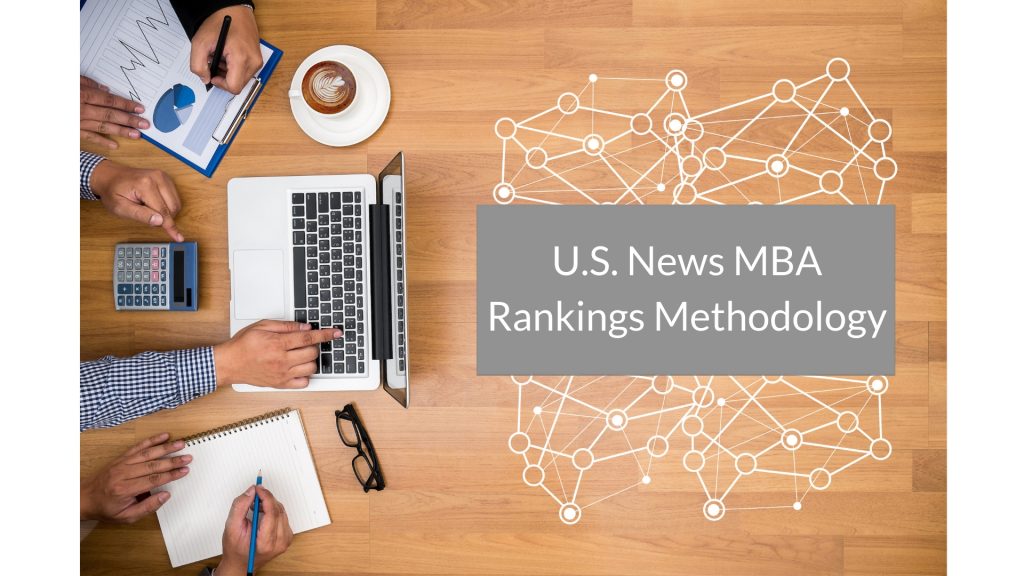The US News MBA Ranking “2020” was published last week. Tagged ‘2020’, to impart a futuristic outlook, it is, in reality, published in 2019 and populated with data pertaining to students either joining or graduating in 2018 – depending on whether the need is to project the incoming class profile or the recruitment stats. Over 100 Business Schools in the US that have provided sufficient data to profile their full-time MBA programs have been included in the rankings.

Many MBA aspirants use business school rankings to research and learn more about their business school options. But how do the changes in these yearly rankings affect an MBA aspirant? To answer this and more questions, Prashant Tibrewal and his team of consultants at Admit Square which is comprised of alumni from top schools such as Wharton, Yale, Duke, and Oxford have analyzed the new ranking list. However, before we get there, let’s understand how the US News Ranking works.
U.S. News Business School MBA Ranking Methodology

Each Ranking system has a defined methodology and uses parameters that are considered salient in assessing business school standards. The following are the parameters that the US News takes into consideration:
- 40% weightage to Peer and Recruiter Assessment: Business school Deans and Directors are asked to rate peer schools, and a select set of Recruiters are asked to rate all participating schools.
- 35% weightage to Placement Success: The Employment Rate, the mean Starting Salary and Joining Bonus received by students who graduated in 2018, are used to calculate placement success.
- 25% weightage to Admissions Competitiveness and Class Profile: About 16% weightage is given to the average GMAT/GRE scores of students entering in Fall 2018. For the first time ever, AWA scores have been used as part of the ranking methodology, a move, which may very well induce schools to focus on increasing their average AWA scores for the incoming classes, in the coming years. Similarly, the average GPA and the percentage of applicants accepted to the program are weighed in.
The following table presents a glimpse of how the top 15 schools moved, across the ranking scale, compared to last year:
| University/School | 2020 | 2019 | Delta |
| Wharton | 1 | 3 | +2 |
| Stanford | 2 | 4 | +2 |
| Harvard | 3 | 1 | -2 |
| MIT Sloan | 3 | 5 | +2 |
| Chicago Booth | 3 | 1 | -2 |
| Columbia | 6 | 9 | +3 |
| Kellogg | 6 | 6 | – |
| Berkeley Haas | 6 | 7 | +1 |
| Yale SOM | 9 | 11 | +2 |
| Duke Fuqua | 10 | 11 | +1 |
| Michigan Ross | 10 | 7 | -3 |
| Dartmouth Tuck | 12 | 10 | -2 |
| NYU Stern | 12 | 13 | +1 |
| Darden | 12 | 13 | +1 |
| Cornell | 15 | 15 | – |
Want to learn more about the different business school rankings and their methodologies? Read this article to learn more.
Clearly, there have been some reshuffling, lots of ties, some big gainers and just a few losers.
What does it all mean for you as an applicant? Here, at Admit Square, we drill down on the insights that really matter.
Tiered Rankings

This year, 5 schools: Wharton, Stanford GSB, Harvard Business School, MIT Sloan, and Booth make up the top 3 spots. 3 schools are tied for the 3rd spot, 3 for the 6th, 2 for the 10th and another 3 for the 12th spot – as if taking “the more, the merrier” sentiment a bit too literally!
The big news is, for the first time ever, Wharton beat Harvard, with Stanford following at a close second. Harvard, MIT, and Booth tie up at the third position.
What it means for you: The competition among the schools is getting fiercer by the day and is poised to get even more fierce in the coming years. For you, this translates to excellent news, as schools put their best foot forward to provide students the best opportunities, infrastructure and learning inputs. It also makes sense to look at schools from a category perspective – the A+ schools now include MIT Sloan and Booth, in addition to the haloed H/S/W. It also becomes prudent to take a close look at the scores indicated at the parameter level and choose the factor most important to you, instead of following the overall ranking only.
Location, Location, Location

It’s true that the world is becoming a global village but if the US News rankings are anything to go by, location is playing an increasingly important role in terms of industry exposure and career opportunities, especially during these challenging times of dipping international applications, owing to the H1B conundrum. Case in point – Tuck, located in Hanover, has slipped out of the top 10 this year, whereas all the top 5 schools are located in more prime geographic locations. Wharton is about an hour away from New York, Stanford is in the neighborhood of Silicon Valley and HBS, Sloan and Booth are located in major metropolitan areas.
The reasons for the geographical advantage could be manifold – work-related networking opportunities, social conveniences, or even the reluctance of significant others to move to remote areas. But the point remains that students are now ascribing higher importance to the location of the school and are becoming increasingly aware of what they want.
What it means for you: If location is not a major factor for you, explore MBA programs lower down the ranking scale, which could reveal amazing opportunities, while remaining less competitive.
Here are some other factors you may need to consider while making your business school decision.
GMAT Scores Climbing Up

GMAT scores continue to weigh heavily on the minds of adcoms, as indicated by the fact that the GMAT average for 8 out of the top 11 schools has risen. The highest GMAT average though isn’t being claimed by Harvard, Stanford, Wharton or MIT The only exception to the rising trend in GMAT averages is, surprisingly, Stanford that saw a 5-point reduction in the average GMAT (from 737 to 732). It is widely assumed and agreed, by several industry experts that a 5-point drop happens more by design than by chance. This could, therefore, be a deliberate attempt to maintain a more realistic average that doesn’t intimidate candidates with strong profiles but not-so-stellar GMAT performances.
Learn more about the importance of your GMAT Score in MBA Admissions. Your GMAT score also affects your post-MBA salary, learn how in this article.
What it means for you: GMAT still weighs heavily on adcom minds and is the most objective area of your application that you can attempt to ace on. So, put in those hours to make sure that you are close to your target schools’ mean score. If you represent a competitive pool of applicants (like the Indian IT-Male), GMAT is one element in your application that can clearly help gain an edge.
Here are 6 ways you can stand out in an over-represented applicant pool.
A Robust Post-MBA Job Market

One of the major reasons why Wharton and Stanford have been able to trump HBS (a frequent Number One in the US News rankings) this year is the excellent career placements and salaries reported at these two schools as per the data published by the US News 2020 Best Business Schools Rankings. But the good news is that these numbers are well into six figures for 47 out of the top 51 schools. The placement rates hovered at about 90% for the top 20 schools. This is excellent news for applicants planning to get their MBAs soon.
What it means for you: Rejoice! It is a great time to get an MBA, with the job market booming and opportunities aplenty!
About the Author
Prashant Tibrewal is the founder of Admit Square Consulting (www.admitsquare.com) and has mentored 1000+ MBA aspirants to get into top global universities like Harvard, Stanford, INSEAD, Oxford, HEC, ISB, etc. With a team of Consultants from some top business schools such as Yale, Wharton, Duke and Oxford, Admit Square offers 100% money-back Assurance on its services. You may send your details to prashant@admitsquare.com for a free profile evaluation.
















